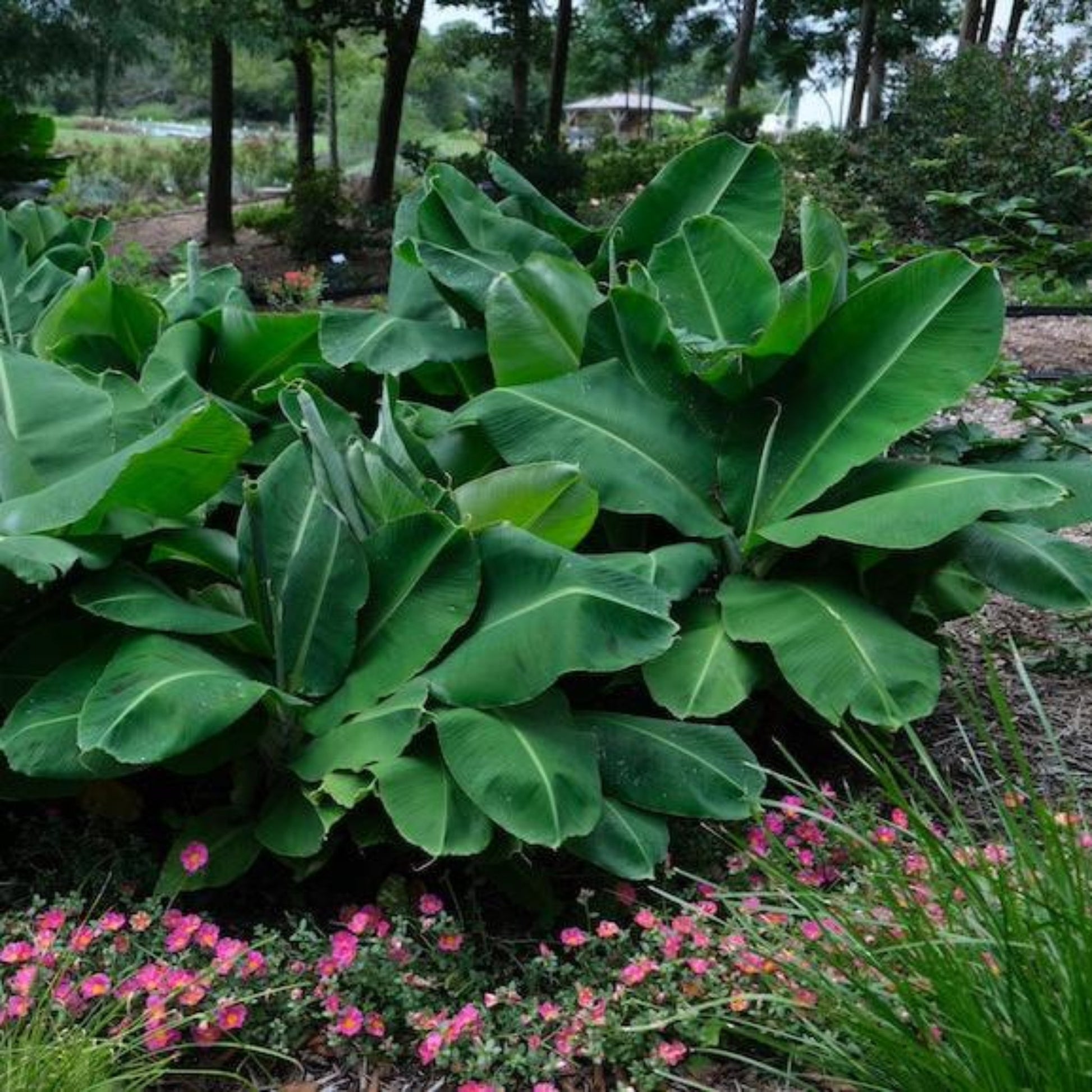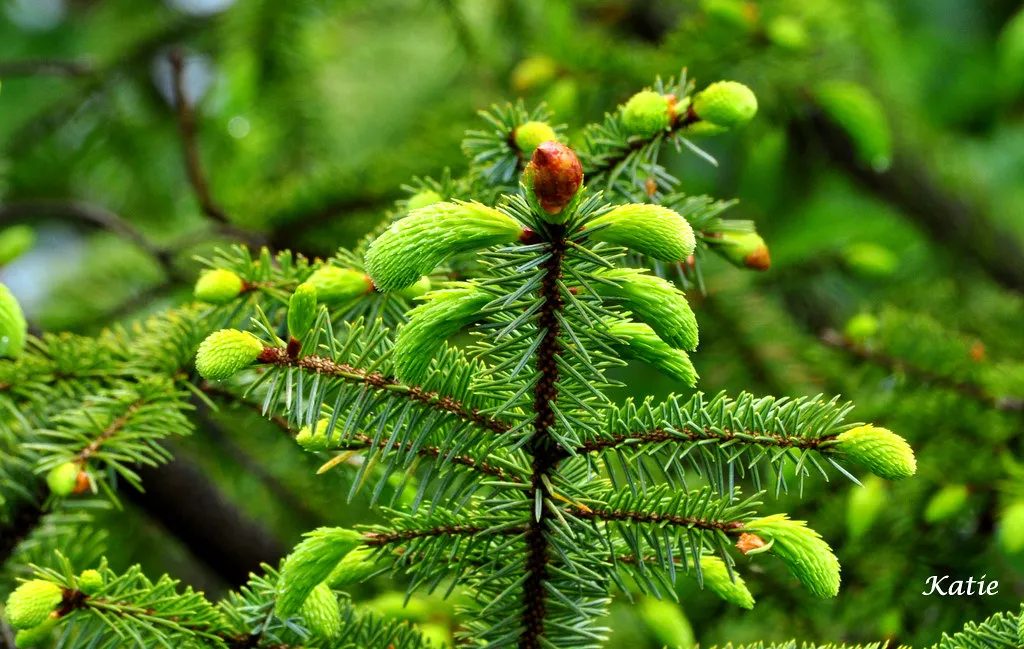To grow a banana tree, plant it in well-drained soil and provide plenty of sunlight. Water regularly to keep the soil moist.
Banana trees bring a tropical vibe to any garden. They thrive in warm climates and need consistent care. Planting them in well-drained soil ensures healthy growth. Ensure the tree gets ample sunlight for robust development. Regular watering keeps the soil moist, aiding in the tree’s growth.
Adding organic compost can boost soil nutrients. Protect the tree from strong winds as they can damage the leaves. Prune any dead or damaged leaves to promote healthier growth. With the right care, a banana tree can yield delicious fruit and add an exotic touch to your garden.
Introduction To Banana Trees
Banana trees are amazing plants that bring a tropical feel to any garden. They are not just beautiful; they also provide delicious, healthy fruits. Growing a banana tree can be a fun and rewarding experience for both kids and adults. With the right care, you can enjoy fresh bananas right from your backyard.
Benefits Of Growing Bananas
There are many benefits of growing bananas in your garden. Here are some key benefits:
- Nutritious Fruit: Bananas are rich in vitamins and minerals.
- Quick Growth: Banana trees grow fast and produce fruit quickly.
- Tropical Ambiance: They add a tropical look to your garden.
- Shade Provider: Their large leaves offer shade for other plants.
- Low Maintenance: Banana trees are easy to care for.
Types Of Banana Trees
There are different types of banana trees you can grow. Each type has its own unique features. Here is a table to help you understand the different types:
| Type | Fruit Size | Ideal Climate |
|---|---|---|
| Dwarf Cavendish | Medium | Warm and humid |
| Red Banana | Large | Hot and dry |
| Blue Java | Medium | Cool and dry |
Choose the type that best suits your garden and climate. With the right care, your banana tree will thrive and produce delicious fruits.
Choosing The Right Location
Growing a banana tree can be a delightful experience. The key lies in choosing the right location. The right spot ensures your banana tree thrives and produces delicious fruit. Let’s explore the ideal conditions for planting.
Ideal Climate
Banana trees thrive in tropical and subtropical climates. They prefer temperatures between 75°F to 95°F. Avoid areas where temperatures drop below 50°F. Cold climates can harm banana trees. High humidity also supports healthy growth.
Sunlight Requirements
Banana trees need plenty of sunlight. They require at least 6-8 hours of direct sun daily. More sunlight ensures better fruit production. Avoid shady spots as they hinder growth. A sunny location is essential for a thriving banana tree.
Soil Preparation
Growing a banana tree starts with proper soil preparation. The right soil ensures your tree grows healthy and fruitful. Let’s dive into the key aspects of soil preparation.
Soil Type And Ph
Banana trees thrive in well-drained, fertile soil. They prefer loamy soil, which is a mix of sand, silt, and clay. This soil type retains moisture while providing good drainage.
Check the soil pH before planting. Banana trees grow best in soil with a pH between 5.5 and 7.0. Use a soil pH tester to ensure your soil meets these requirements. Adjust the pH if needed using lime to raise it or sulfur to lower it.
Soil Enrichment
Enrich the soil with organic matter. Compost, well-rotted manure, and green manure are excellent choices. These materials improve soil structure and provide essential nutrients.
Prepare the soil by adding a 2-4 inch layer of compost. Mix it into the top 6-8 inches of soil. This enriches the soil and helps retain moisture.
Consider adding a balanced fertilizer. A 10-10-10 (N-P-K) fertilizer works well. Apply it according to the package instructions.
Here’s a simple table for quick reference:
| Soil Requirement | Details |
|---|---|
| Soil Type | Well-drained, loamy |
| pH Level | 5.5 to 7.0 |
| Organic Matter | Compost, well-rotted manure |
| Fertilizer | 10-10-10 (N-P-K) |
Proper soil preparation sets the foundation for a healthy banana tree. Happy planting!
Planting Your Banana Tree
Banana trees can transform your garden into a tropical paradise. Proper planting is key to their growth. This section will guide you through the essential steps for planting your banana tree.
Planting Depth
Planting depth is crucial for banana tree health. The hole should be deep enough to cover the root ball. Aim for about 18 inches deep and 2 feet wide. This ensures the roots have space to spread. Avoid planting too deep to prevent root rot. Fill the hole with nutrient-rich soil. Ensure the tree stands upright.
Spacing Between Trees
Proper spacing between banana trees promotes healthy growth. Each tree needs adequate space to access nutrients and sunlight. Space banana trees at least 10-15 feet apart. This prevents overcrowding and allows air circulation. Adequate spacing also reduces disease spread. Follow this guideline for a thriving banana grove.
Watering Guidelines
Watering a banana tree correctly is essential for its growth. Too much or too little water can cause problems. Follow these guidelines for a healthy banana tree.
Watering Frequency
Banana trees need a lot of water to thrive. Water the tree deeply once a week. During hot months, increase watering to twice a week.
Keep the soil consistently moist but not soggy. A good rule is to water when the top inch of soil feels dry.
Signs Of Overwatering
Overwatering can harm your banana tree. Look for these signs:
- Yellowing leaves
- Soft, mushy stems
- Root rot
To avoid overwatering, ensure the soil drains well. Use a pot with drainage holes if growing in a container.
| Symptom | Cause | Solution |
|---|---|---|
| Yellowing leaves | Too much water | Reduce watering frequency |
| Soft, mushy stems | Waterlogged soil | Improve soil drainage |
| Root rot | Standing water | Use well-draining soil |
By following these watering guidelines, your banana tree will grow strong and healthy.

Credit: www.amazon.com
Fertilizing Your Banana Tree
Fertilizing your banana tree is crucial for its healthy growth. Proper fertilization ensures vibrant foliage and a bountiful harvest. In this section, we’ll cover the types of fertilizers and the application schedule for your banana tree.
Types Of Fertilizers
Banana trees thrive with balanced nutrients. Here are the main types of fertilizers you can use:
- Organic Fertilizers: Composted manure, fish emulsion, and seaweed extract.
- Inorganic Fertilizers: NPK fertilizers with a balanced ratio like 8-10-8.
Organic fertilizers enrich the soil and improve its structure. Inorganic fertilizers provide quick nutrient boosts. Combining both types can yield the best results for your banana tree.
Application Schedule
Following a consistent application schedule is key to a healthy banana tree. Here is a simple schedule:
| Season | Fertilizer Type | Frequency |
|---|---|---|
| Spring | Balanced NPK | Every 2 weeks |
| Summer | Organic and Inorganic | Every 2 weeks |
| Fall | High Potassium | Once a month |
| Winter | Minimal or None | As needed |
In spring and summer, use a balanced NPK fertilizer every two weeks. In fall, switch to a high potassium fertilizer once a month. In winter, reduce fertilization as growth slows.
Always water your banana tree after fertilizing. This helps nutrients reach the roots effectively. Over-fertilizing can harm your banana tree, so stick to the schedule.
Pest And Disease Control
Growing a banana tree brings a tropical vibe to your garden. But pests and diseases can ruin your efforts. Understanding how to manage these issues is crucial. This section covers common pests and how to prevent diseases. Let’s dive in!
Common Pests
Banana trees attract various pests. Knowing the common ones helps in quick action.
- Aphids: These small insects suck the sap from leaves.
- Banana Weevil: This pest bores into the stem, causing wilting.
- Thrips: They damage the fruit, making it less appealing.
- Spider Mites: These tiny pests create webbing on leaves.
To control these pests, use natural predators or insecticidal soap. Regularly inspect your banana tree. Early detection is key.
Disease Prevention
Banana trees are prone to various diseases. Prevention is better than cure.
Here’s a list of common banana tree diseases:
- Panama Disease: A soil-borne fungus that causes wilting.
- Black Sigatoka: A fungal leaf spot disease.
- Bunchy Top Virus: This virus causes stunted growth.
Follow these tips to prevent diseases:
- Plant disease-resistant varieties.
- Keep the area around your banana tree clean.
- Ensure proper drainage to avoid waterlogging.
- Use sterilized tools to prevent disease spread.
Regularly monitor your banana tree for signs of disease. Early intervention can save your plant.

Credit: livegoodlogistics.com
Harvesting Bananas
Growing a banana tree can be a rewarding experience. The most exciting part of this journey is harvesting the bananas. Knowing the right time and technique to harvest ensures you get the best taste and quality.
When To Harvest
Bananas do not ripen on the tree. You need to pick them when they are still green. Look for these signs to know it’s time:
- Color Change: The bananas should turn from dark green to light green.
- Size: The bananas should be plump and round.
- Time: Usually, it takes about 75-80 days after the flower appears.
Check the bananas regularly during this period to ensure they are ready.
Proper Harvesting Techniques
Harvesting bananas properly is crucial for the best results. Follow these steps:
- Use a Sharp Knife: Use a clean, sharp knife or machete.
- Cut the Bunch: Cut the entire bunch from the stalk. Leave about six inches of stalk attached to the bunch.
- Handle with Care: Bananas bruise easily. Handle them gently to avoid damage.
- Hang the Bunch: Hang the bunch in a cool, shaded place to ripen.
Following these techniques ensures your bananas ripen evenly and taste great.
Storage Tips
Once harvested, proper storage is essential. Here are some tips:
| Storage Method | Details |
|---|---|
| Hanging | Hang in a cool, shaded place. |
| Temperature | Keep them at 60-70°F (15-21°C). |
| Checking | Check daily for ripeness. |
With these tips, you can enjoy delicious, home-grown bananas.
Post-harvest Care
After enjoying the delicious fruits from your banana tree, it’s essential to understand post-harvest care. Proper care ensures the longevity of your tree and maximizes the benefits of your harvest. This section covers how to store bananas and utilize banana leaves effectively.
Storing Bananas
Bananas can ripen quickly after harvest. It’s important to store them correctly to prolong their freshness. Follow these steps for the best results:
- Keep bananas at room temperature. This helps them ripen evenly.
- Hang the bananas to prevent bruising. Use a banana hanger or a hook.
- Once ripe, place the bananas in the refrigerator. This slows down the ripening process.
Here’s a quick table to summarize the storage process:
| Storage Stage | Temperature | Method |
|---|---|---|
| Initial Storage | Room Temperature | Hang the bananas |
| Post-Ripening | Refrigerator | Place in fridge |
Using Banana Leaves
Banana leaves have many uses and should not be discarded. They are strong and flexible, making them ideal for various purposes:
- Cooking: Use banana leaves to wrap food. This adds a unique flavor.
- Serving: Use the leaves as natural plates. This is eco-friendly and looks great.
- Gardening: Compost the leaves to enrich the soil.
Using banana leaves effectively can enhance your culinary and gardening experiences. Embrace these tips to make the most of your banana tree.

Credit: www.vecteezy.com
Frequently Asked Questions
How Much Sunlight Does A Banana Tree Need?
A banana tree needs full sunlight for at least six hours daily. Adequate sunlight ensures healthy growth and fruit production.
What Type Of Soil Is Best For Banana Trees?
Banana trees thrive in well-drained, fertile soil. Sandy loam or loamy soil with good organic matter content is ideal.
How Often Should I Water My Banana Tree?
Water your banana tree deeply once a week. Increase frequency during hot, dry periods to keep the soil moist.
Can Banana Trees Grow Indoors?
Yes, dwarf banana varieties can grow indoors. Ensure they receive plenty of sunlight and maintain high humidity levels.
Conclusion
Growing a banana tree can be a rewarding experience. Follow these tips for a thriving plant. Enjoy fresh bananas from your garden. With patience and care, your banana tree will flourish. Happy gardening and savor the tropical treat!


